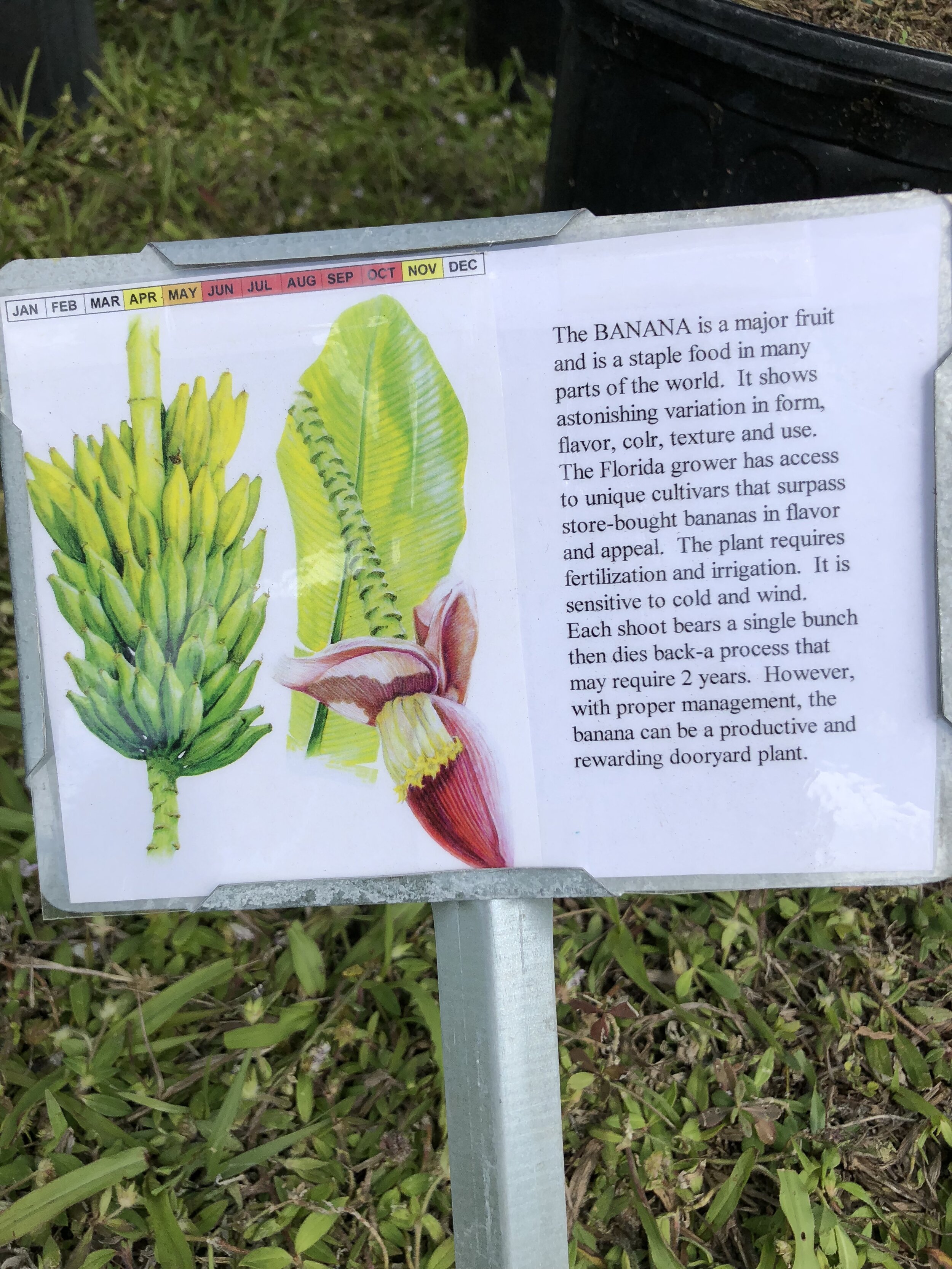Banana Trees
General Information and Fun Facts
The banana tree is actually an herbaceous perennial despite being referred to as a tree. The base of the plant that looks like a trunk is actually tightly bound banana tree leaves. This “trunk” is botanically referred to as pseudostem, which means false stem. The interior of the banana tree pseudostem is where all the growth of the plant occurs.
You’re peeling your bananas wrong. Bananas are much harder to open at their stem. Instead you’re supposed to open them on the opposite side at the top, to avoid mashing or bruising the fruit. This is how monkeys do it! Plus, if you notice in cartoons banana peels on the ground are attached at their stems.
Clusters of bananas are called hands, and individual bananas are called fingers.
The giant leaves of the banana tree serve a useful purpose. During tropical storms or hurricanes, the leaf will shred along each side. The raggedy look keeps the leaves of the banana tree from being snapped off in the high winds.
Make sure to select the right variety of bananas. Sometimes when a tree says “banana” it doesn’t mean that it produces fruit. The Cavendish Banana tastes sweet and it is the banana variety that is most commonly found in super markets.
Watering
Banana Trees need a lot of water, both in the ground and in the air. The huge soft leaves evaporate a lot, and you have to keep up the supply. Bananas also need high humidity to be happy. Some banana growers water their plants two or three times a day with sprinklers to keep up the humidity. Keep the soil moist but not over saturated. When banana trees sit in water they are susceptible to root rot.
Picking a Location
You need very rich, dark, fertile soil and if you don't have good soil to start with, you can make some. Banana trees prefer slightly acidic soil with a pH balance ranging from 5.5 to 6.5. You can test the pH of your soil with a kit from a local gardening store. You can raise the acidity of your soil by adding peat moss or a fertilizer that’s high in nitrogen. Incorporate lots of compost and manure (which contains nitrogen and potassium) before you plant your bananas. You can also improve the drainage of your soil by adding organic material like peat moss to it. Wood Ash for extra potassium is also helpful. Banana plants should be surrounded with a thick layer of mulch. Over time, continue to keep mulching the banana plant. Most fruiting bananas are cold hardy to growing zones 9 – 11. The ideal temperature range for banana growing is around 26-30°C (78-86°F). Bananas can handle extreme heat (if they have enough water), but they don't like it. They can handle cool weather for a short while, but they don't like that either. Banana trees like to be grown in full to partial sun. Frost kills the banana plant above ground, but the corm, (a big rhizome at the base of a banana plant under the ground), can survive and may re-shoot. The pseudostem of the hardy banana has a short lifespan, living only long enough to flower and fruit. This process can often take more than a year, so when planting in colder climates, you will be unlikely to see any fruit (if you do it is probably inedible). Banana plants also like the shelter of other bananas. Give your tree a buddy. Banana trees don’t like to be alone and prefer to do things in groups. A group of 3 or more banana trees is best. Often this is the key to growing banana plants. They are sensitive to wind, so make sure that your trees don’t end up in an area of your yard that gets hit by heavy, cold winds. Placing them near a wall or behind a row of evergreens will help protect them. However, most trees can attain heights up to 18 feet, so they need a ton of space.
Tree Care and Harvesting
During the summer make sure to fertilize your banana trees once a month with a well-balanced, all natural, organic fertilizer. Formula 10-10-10 is an excellent choice. A banana plant takes about 9 months to grow and produce a bunch of bananas. Banana trees can grow rapidly, as much as 12 feet with 6-inch leaves in one season. After you harvest the bananas, cut your tree back to about 20-30 inches and it will then need heavy mulch piled over the top of the remaining crown. Since the banana stalk only produces fruit once, it’s important to cut them back in order for new fruit to grow. A yellow banana may look good, but it is NOT fully ripened yet. Bananas reach their maximum potential when they have some brown spots on them. These spots indicate that the sugar content has risen in the ripening process. However, don’t wait too long where the banana is too brown.








